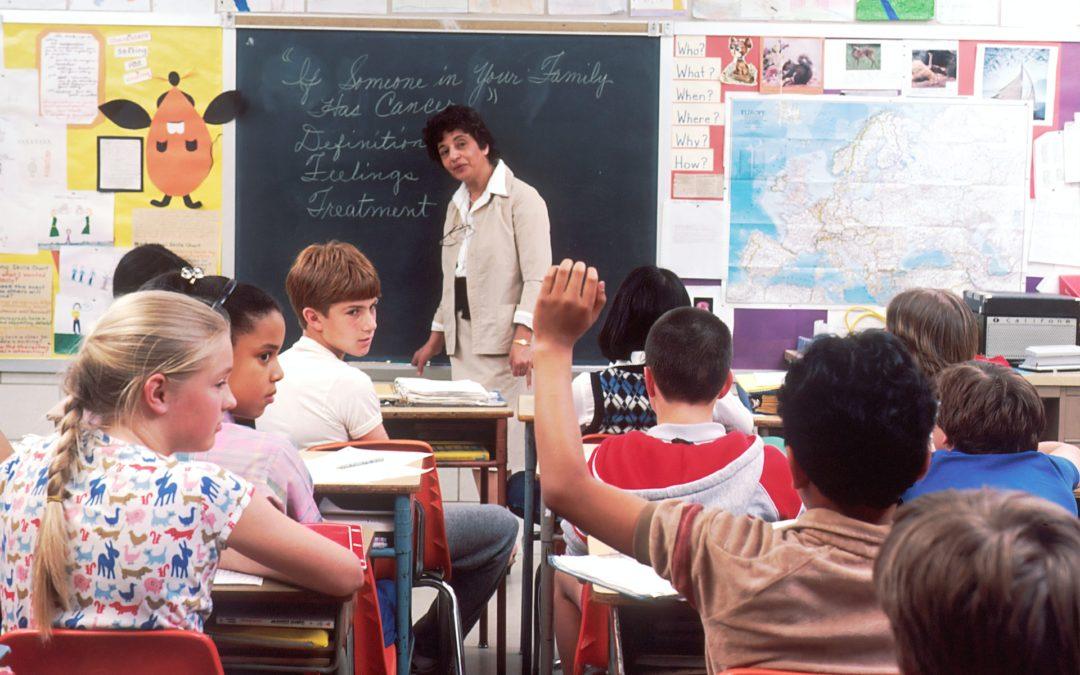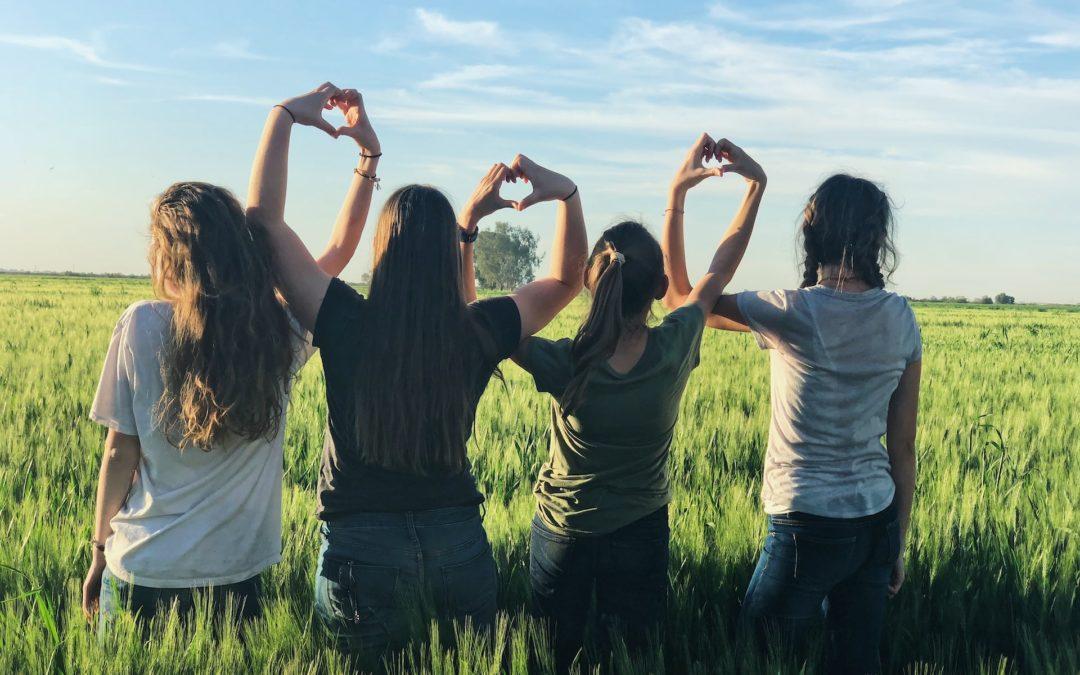Social dynamics are the patterns and behaviors through which humans interact in society, shaping our daily lives and relationships. These dynamics are complex and multifaceted, influencing everything from personal interactions to large-scale social structures. This article explores 30 of the best social dynamics examples, offering insights into how these forces operate in various contexts. Understanding these examples is crucial for anyone looking to navigate social environments more effectively, whether in personal relationships, the workplace, or broader societal interactions.
In our guide, we delve into a diverse range of social dynamics, highlighting their impact and relevance in contemporary settings. Each example is carefully chosen to illuminate different aspects of social behavior, from group dynamics and communication patterns to power relations and cultural norms. By the end of this guide, you will have a comprehensive understanding of social dynamics, equipped with practical knowledge to apply in your daily interactions and observations of the world around you.
What is The Meaning of Social Dynamics?
Social dynamics refers to the patterns of change and stability in social behavior over time. These dynamics encompass how individuals, groups, and societies interact, evolve, and influence one another. Key elements include communication patterns, group behavior, social norms, and societal structures. Social dynamics play a crucial role in understanding cultural trends, organizational development, and collective decision-making. This concept is pivotal in disciplines like sociology, anthropology, and psychology, offering insights into human behavior and social structures.
Social dynamics involve also the study of how social relationships and roles develop and change. This includes examining factors like power dynamics, social stratification, and the impact of technology on human interactions. The concept explores how societal norms and values are formed, maintained, and altered, and how these factors influence individual and collective behavior. In a broader context, social dynamics are integral in shaping political, economic, and educational systems, influencing how societies grow and adapt to challenges. Understanding social dynamics is essential for policymakers, educators, and business leaders to effectively address social issues and foster positive change in communities and organizations.
Social dynamics further delves into the mechanisms of social change and stability. It examines how cultural shifts occur and the role of social influencers and leaders in these processes. This concept also includes the study of conflict resolution and cooperation within and between groups. Additionally, it looks at the diffusion of innovations and ideas through social networks, exploring how trends spread and societal attitudes evolve.
Moreover, social dynamics is critical in understanding demographic changes such as migration patterns, aging populations, and urbanization. It provides insights into how these demographic shifts impact social structures, resource allocation, and policy development. In the realm of social psychology, it explores how group dynamics influence individual behaviors and attitudes, including conformity, obedience, and leadership.
In the digital age, social dynamics are increasingly influenced by online communities and social media platforms, altering traditional communication patterns and social interactions. This aspect of social dynamics is particularly relevant for understanding the rapid spread of information and the formation of online communities and movements.
Overall, the study of social dynamics is multifaceted and intersects with various fields, offering a comprehensive understanding of the complexities of social interactions and societal change.
The Best Examples of Social Dynamics
1. Group Conformity
Individuals often seek acceptance within a group, leading to group conformity. This phenomenon involves individuals adjusting their opinions or behaviors to align with the majority. While conformity can create a sense of unity, it may also stifle creativity and independent thinking. Understanding group conformity is essential for comprehending how social dynamics shape individual decision-making processes within the context of collective influence.
2. Leadership Styles
Leadership styles have a profound impact on group dynamics. Different leaders adopt various approaches, such as authoritarian, democratic, or laissez-faire. An authoritarian leader may impose strict control, a democratic leader encourages group participation, and a laissez-faire leader allows more autonomy. The leadership style sets the tone for communication, decision-making, and the overall functioning of the group, influencing its cohesion and effectiveness.
3. Cultural Norms
Cultural norms provide the framework for social interactions. They encompass expectations, values, and traditions shared within a community. Social dynamics are deeply embedded in cultural norms, shaping how individuals express themselves, form relationships, and navigate societal expectations. Acknowledging and respecting cultural diversity is crucial for understanding and adapting to the social dynamics of different communities.
4. Social Hierarchies
Groups tend to establish hierarchies, where certain individuals hold more influence or power than others. This hierarchy can be based on factors like expertise, experience, or social standing. Understanding social hierarchies is vital for recognizing power dynamics within a group and how these dynamics influence decision-making, communication, and overall group cohesion.
5. Peer Pressure
Peer pressure is a powerful force in shaping individual behaviors within a social context. It involves the influence of peers on an individual’s choices, often leading to conformity. Whether positive or negative, peer pressure can significantly impact decision-making and behavior, highlighting the interconnected nature of individuals within a group and the influence they have on each other.
6. Social Roles
Within a group, individuals often assume specific roles based on their skills, personalities, or expertise. These roles contribute to the overall functionality of the group. Understanding social roles helps in appreciating the diverse contributions of group members and how these roles evolve based on individual strengths and group needs.
7. Communication Patterns
Effective communication is fundamental to successful social interactions. Communication patterns, including language use, tone, and listening skills, shape the quality of interactions. Clear and empathetic communication fosters understanding and connection, whereas poor communication can lead to misunderstandings and conflicts. Recognizing and adapting to diverse communication styles is essential for navigating complex social dynamics.
8. In-Group vs. Out-Group Dynamics
Social groups often define themselves about others, leading to in-group and out-group dynamics. This distinction can influence attitudes, behaviors, and perceptions. In-group members may develop a sense of belonging and loyalty, while out-group members may face prejudice or exclusion. Understanding these dynamics is crucial for addressing social biases and promoting inclusivity.
9. Social Media Impact
In the digital age, online platforms play a significant role in shaping opinions, trends, and social dynamics. Social media influences public discourse, disseminates information, and connects individuals globally. It can amplify both positive and negative aspects of social dynamics, contributing to the formation of communities, the spread of ideas, and the shaping of public opinion.
10. Conflict Resolution
Conflicts are inevitable in social interactions, and how they are resolved significantly impacts group dynamics. Constructive conflict resolution involves effective communication, empathy, and compromise. Successful resolution fosters a healthier group environment, while unresolved conflicts can lead to tension, division, and a breakdown in social cohesion.
11. Social Exclusion
The act of excluding individuals from a group can have profound effects on both the excluded individuals and the overall dynamics of the group. Social exclusion can lead to feelings of isolation, and resentment, and negatively impact the group’s atmosphere. Addressing and preventing social exclusion is essential for fostering inclusivity and maintaining a positive social environment.
12. Social Networking
Building and maintaining connections form the foundation of social networking. The strength of one’s social network can influence personal and professional opportunities. In today’s interconnected world, the ability to navigate and leverage social networks is crucial for enhancing social influence, gaining support, and accessing resources.
13. Social Capital
Social capital refers to the value derived from social relationships and networks. It encompasses trust, reciprocity, and shared norms within a community. High social capital can positively affect personal and professional success, as individuals with strong social connections often have access to valuable resources, information, and support networks.
14. Altruism and Cooperation
Acts of kindness and cooperation contribute positively to social dynamics, fostering a sense of community. Altruistic behaviors, where individuals act for the benefit of others without expecting anything in return, strengthen social bonds and create a supportive environment. Cooperation is essential for achieving common goals and maintaining harmonious relationships within a group.
15. Competition
Healthy competition serves as a motivating force, pushing individuals to strive for excellence and achieve their best. It fosters innovation, encourages personal growth, and can elevate overall group performance. However, when competition becomes excessive or cutthroat, it may lead to negative social dynamics. Intense rivalry can create a hostile environment, breed animosity, and undermine collaboration, potentially hindering the collective success of a group.
16. Stereotypes and Prejudice
Preconceived notions about individuals or groups, known as stereotypes, can significantly shape interactions and contribute to social inequalities. Stereotypes often result in unfair judgments, limiting opportunities and reinforcing biased perspectives. Addressing and challenging these stereotypes is crucial for fostering inclusivity, promoting diversity, and building a more equitable social environment.
17. Social Change Movements
Activism and advocacy efforts are catalysts for societal transformation. Social change movements challenge established norms and power structures, aiming to rectify injustices and bring about positive shifts in social dynamics. These movements play a vital role in shaping public discourse, raising awareness, and mobilizing communities toward collective action for a more just and equitable society.
18. Generational Differences
Diverse perspectives among different age groups contribute to the evolving nature of social dynamics. Each generation brings unique values, experiences, and expectations, influencing societal norms and trends. Understanding and appreciating generational differences are essential for fostering intergenerational understanding, collaboration, and a more inclusive social environment.
19. Social Loafing
Social loafing refers to the tendency for individuals to exert less effort in a group setting, relying on others to do the work. This phenomenon can hinder group productivity and diminish the sense of shared responsibility. Addressing social loafing involves promoting individual accountability, fostering a collaborative mindset, and ensuring that each member actively contributes to the group’s goals.
20. Clique Formation
Clique formation involves the creation of small, exclusive groups within a larger social setting. These cliques can influence overall group dynamics by fostering camaraderie among members but may also lead to exclusion and division. Understanding and managing clique dynamics is crucial for promoting inclusivity and preventing the formation of social factions that could undermine group cohesion.
21. Norms of Reciprocity
Norms of reciprocity involve the expectation that individuals will respond to positive actions with positive actions, fostering mutual trust. This social contract is essential for building and maintaining positive relationships within a group. Reciprocal behaviors contribute to a supportive social environment where individuals feel valued, respected, and willing to collaborate for the common good.
22. Power Dynamics
Understanding and navigating power structures within a group is crucial for effective social interaction. Power dynamics influence decision-making, resource distribution, and overall group cohesion. Recognizing and addressing imbalances in power contribute to a more equitable social environment where diverse voices are heard, and collective decision-making is transparent and fair.
23. Social Anxiety
Individuals with social anxiety may alter their behavior to avoid scrutiny, impacting group dynamics. Social anxiety can lead to feelings of isolation and hinder effective communication. Creating a supportive and understanding environment is essential for individuals with social anxiety to feel included and contribute meaningfully to group interactions.
24. Gossip
The spread of information, whether true or false, can significantly influence perceptions and social relationships. Gossip can create a culture of mistrust, breed conflict, and damage reputations. Fostering open communication and promoting a culture of respect helps mitigate the negative impact of gossip on social dynamics.
25. Crisis Response
How a community responds to a crisis or disaster reveals aspects of its social dynamics. Effective crisis response requires coordination, empathy, and collective action. The way individuals come together during challenging times reflects the strength of social bonds and the resilience of the community.
26. Emotional Contagion
Emotional contagion is the phenomenon where emotions spread rapidly through a group, affecting the overall mood and atmosphere. Positive emotions can enhance group cohesion, while negative emotions may lead to tension and conflict. Recognizing and managing emotional contagion contributes to a healthier group dynamic and a more positive social environment.
27. Social Support Networks
Having a strong support system positively influences an individual’s resilience and well-being. Social support networks provide emotional, practical, and informational assistance during challenging times. Cultivating and maintaining such networks is essential for fostering a sense of belonging and promoting mental and emotional well-being within a community.
28. Fashion Trends
The adoption of certain styles and trends can reflect or shape social dynamics within a community. Fashion choices often convey cultural, social, and individual identity, influencing how individuals are perceived and how they connect with others. Understanding the role of fashion trends provides insights into the ever-evolving nature of societal preferences and values.
29. Social Learning
Observational learning and modeling behaviors after others play a significant role in shaping social dynamics. Individuals learn from the actions and experiences of those around them, contributing to the transmission of cultural norms, values, and behaviors. Recognizing the impact of social learning helps understand how certain patterns and practices are perpetuated across generations and communities.
30. Body Language and Nonverbal Cues
Human communication extends beyond spoken words. Body language, gestures, facial expressions, and posture play a crucial role in conveying emotions and intentions. In social dynamics, these nonverbal cues can either enhance or hinder interactions. For instance, open and confident body language might foster a positive atmosphere, while closed-off or defensive postures could lead to misunderstandings. The subtleties of nonverbal communication contribute significantly to the overall mood and dynamics of a social situation.
How Do Social Dynamics Influence Individual Behavior?
Social dynamics exert a profound influence on individual behavior, shaping the way people think, act, and relate to others within a given social context. At its core, human behavior is inherently social, and individuals are deeply interconnected within the fabric of their communities. One primary mechanism through which social dynamics influence behavior is the process of socialization, wherein individuals internalize the norms, values, and cultural expectations prevalent in their social environment.
Norms, both explicit and implicit, play a pivotal role in guiding individual behavior. Social dynamics establish a set of shared expectations within a community, dictating what is deemed acceptable or unacceptable. Individuals tend to conform to these norms to gain acceptance, avoid social sanctions, and foster a sense of belonging. This conformity is a manifestation of the influence that group dynamics hold over individual choices, leading to a degree of uniformity in behavior within a particular social setting.
Moreover, the impact of social dynamics on individual behavior extends to the phenomenon of social influence. Peer pressure, for instance, is a manifestation of how individuals adjust their behavior to align with the majority within a group. The desire for social approval and the fear of social exclusion drive individuals to conform to the perceived norms of their peers. This conformity can be a powerful force, steering individuals towards adopting certain attitudes or behaviors that align with the prevailing social dynamics.
Social dynamics also influence individual behavior through the establishment of social roles and hierarchies within groups. Each member of a community often assumes specific roles based on their skills, personalities, or societal expectations. These roles contribute to the overall functioning of the group, shaping individual behavior as individuals strive to fulfill their designated roles and maintain group harmony. Power dynamics within a group further accentuate this influence, as individuals in positions of authority wield a significant impact on the behavior of others.
In essence, social dynamics are a pervasive force that molds individual behavior through mechanisms such as socialization, norm conformity, social influence, and the establishment of roles and hierarchies. The intricate interplay between individuals and their social environment underscores the dynamic nature of human behavior, illustrating how the collective dynamics of a community shape the actions and choices of its members.
Types of Social Dynamics
Communication Dynamics – Communication dynamics encompass the study of how information is exchanged within a group. This includes verbal and nonverbal communication, the use of language, and the impact of technology on communication patterns. Effective communication is essential for fostering understanding, collaboration, and the overall functioning of social groups.
Power Dynamics – Power dynamics involve the distribution and exercise of influence within a group. This includes understanding leadership structures, authority relationships, and how power imbalances can shape decision-making processes. Recognizing power dynamics is crucial for maintaining fairness and inclusivity within a group.
Group Conformity – Group conformity explores the tendency of individuals to align their opinions or behaviors with the majority within a group. This phenomenon is often driven by the desire for social acceptance or the fear of exclusion. Group conformity can impact decision-making, social norms, and overall group cohesion.
Cultural Dynamics – Cultural dynamics study how cultural elements, such as values, norms, traditions, and beliefs, shape social interactions. Culture provides a framework for understanding the world, influencing individual behaviors, and contributing to the unique identity of a community.
Social Change Dynamics – Social change dynamics focus on the processes through which societies evolve over time. This involves shifts in norms, values, and behaviors, often driven by external factors or internal movements advocating for change. Understanding social change is crucial for adapting to evolving societal needs.
Conflict Dynamics – Conflict dynamics examine how conflicts arise, escalate, and are resolved within social groups. This includes understanding the sources of conflicts, the impact on group dynamics, and effective strategies for conflict resolution to maintain group harmony.
Social Identity Dynamics – Social identity dynamics explore how individuals perceive themselves within social groups. Social identities influence behaviors, attitudes, and interactions with others. Understanding social identity dynamics is crucial for promoting inclusivity and recognizing the diversity within a community.
Generational Dynamics – Generational dynamics consider the influence of different age groups on social interactions and cultural trends. Each generation brings unique perspectives and values, contributing to the evolving nature of societal dynamics. Understanding generational dynamics aids in fostering intergenerational understanding.
Network Dynamics – Network dynamics study how social networks, both online and offline, influence information flow, social influence, and the spread of behaviors or ideas within a community. This includes understanding the structure of social networks and their impact on individual and collective behaviors.
In-Group vs. Out-Group Dynamics – In-group vs. out-group dynamics explore how social groups define themselves about others. This can lead to distinctions between in-group members (those considered part of the group) and out-group members (those considered outsiders). Understanding these dynamics is crucial for addressing social biases and promoting inclusivity.
Emotional Dynamics – Emotional dynamics examine how emotions, both individual and collective, influence social interactions. This includes the spread of emotions within a group and their impact on overall mood and atmosphere. Emotional dynamics contribute to the overall emotional climate of a social setting.
Social Capital Dynamics – Social capital dynamics focus on the value derived from social relationships and networks. This includes elements such as trust, reciprocity, and the tangible benefits individuals gain through their social connections. Building and maintaining social capital is crucial for personal and community well-being.
Community Response Dynamics – Community response dynamics study how communities collectively respond to crises, disasters, or significant events. This involves understanding the mobilization of resources, support networks, and the impact on community resilience. Analyzing community responses provides insights into the strength and adaptability of a community.
Fashion and Trend Dynamics – Fashion and trend dynamics explore how the adoption of certain styles, trends, and cultural symbols reflects or influences social dynamics within a community. This includes understanding how fashion choices contribute to identity expression and the impact of trends on social perceptions.
Importance Of Social Dynamics
Social dynamics play a crucial role in shaping the fabric of human societies and communities. At its core, understanding and navigating social dynamics are essential for fostering cohesion, cooperation, and a sense of belonging within a group. Human beings are inherently social creatures, and the ability to comprehend and engage with the dynamics of social interactions is fundamental for the functioning and stability of communities.
One primary importance of social dynamics lies in the establishment and maintenance of social order. Norms, values, and shared expectations create a framework that guides individual behavior, fostering a sense of predictability and stability within a community. By adhering to these social norms, individuals contribute to a harmonious coexistence, minimizing conflicts and promoting a shared understanding of acceptable behavior.
Social dynamics also play a pivotal role in the transmission of cultural knowledge and traditions. Through the process of socialization, individuals learn the values, beliefs, and practices of their community. This cultural continuity is vital for the preservation of societal identity and heritage. Social dynamics serve as a conduit for the passing down of knowledge from one generation to the next, ensuring the sustainability of cultural norms and practices over time.
Furthermore, social dynamics contribute to the development of individual identity and self-concept. Interactions within a social context provide individuals with feedback, validation, and a sense of their roles within the larger community. The recognition and acceptance gained through social interactions influence individuals’ perceptions of themselves, contributing to the formation of a stable self-identity. The importance of social dynamics in shaping individual identity underscores the interconnectedness between the individual and the broader social environment.
Overall, the importance of social dynamics lies in their role as a foundational framework for social order, cultural transmission, and the development of individual identity. Understanding and navigating social dynamics are vital components of human existence, contributing to the stability, continuity, and overall well-being of communities.
What Role Does Culture Play in Social Dynamics?
Culture plays a fundamental role in shaping and influencing social dynamics within a given community or society. At its core, culture encompasses the shared beliefs, values, customs, traditions, and norms that define a particular group of people. These cultural elements serve as a guiding framework for social interactions, influencing how individuals within the culture perceive, interpret, and engage with the world around them.
One key aspect of culture in social dynamics is its role in shaping communication patterns. Language and nonverbal cues, deeply rooted in cultural contexts, play a crucial role in how individuals express themselves and interpret the expressions of others. Cultural nuances in communication can impact the clarity of messages, the perception of politeness, and the overall effectiveness of interpersonal interactions.
Cultural norms and values establish the boundaries of acceptable behavior within a community. Social dynamics are heavily influenced by these norms, as individuals within a culture often conform to shared expectations to gain acceptance and avoid social sanctions. These norms contribute to the establishment of social roles, guiding individuals on how to fulfill specific functions within the community. The adherence to cultural norms fosters a sense of cohesion and collective identity, shaping the overall dynamics of social groups.
Furthermore, culture plays a role in defining social hierarchies and power structures. The distribution of authority, influence, and decision-making within a society often reflects cultural values and traditions. Understanding these cultural dynamics is crucial for navigating power relationships, as cultural norms may dictate the appropriate ways individuals express respect, deference, or challenge authority within the given social context.
Lastly, culture significantly influences social dynamics by shaping communication patterns, establishing norms and values, guiding social roles, and defining power structures within a community. The cultural framework provides individuals with a shared understanding of how to navigate and participate in social interactions, contributing to the overall stability and coherence of the social fabric.
How Do Social Dynamics Influence Decision-Making in A Group?
Social dynamics exert a profound influence on the decision-making processes within a group, shaping how individuals contribute, collaborate, and arrive at collective choices. One key aspect is the role of communication patterns within the group. Effective communication, influenced by social dynamics, allows for the exchange of diverse perspectives and information. Clear and open communication fosters an environment where group members can share their thoughts, ideas, and concerns, contributing to a more comprehensive decision-making process.
Power dynamics within the group play a crucial role in influencing decision-making. Social hierarchies and the distribution of authority impact how decisions are initiated, discussed, and ultimately reached. Individuals with higher social status or those in positions of leadership often have a more significant influence on the decision-making process. Recognizing and understanding these power dynamics is essential for ensuring fair and inclusive decision-making within the group.
Social norms and group conformity also shape decision-making within a group. The desire for social acceptance and the fear of rejection can lead individuals to conform to the majority opinion, even if it differs from their initial stance. This phenomenon, known as groupthink, can hinder critical thinking and the exploration of alternative perspectives. Group members may prioritize maintaining harmony within the group over expressing dissenting opinions, influencing the final decisions made by the collective.
Additionally, the social identity of individuals within the group contributes to decision-making dynamics. Individuals may align their decisions with the perceived norms and values of the social groups to which they belong. This alignment enhances group cohesion but may also limit the diversity of perspectives considered during the decision-making process. Recognizing and managing these social identity dynamics is crucial for ensuring a more inclusive and robust decision-making environment within the group.
Overall, social dynamics influence group decision-making through communication patterns, power structures, social norms, and the impact of social identity. A nuanced understanding of these dynamics is essential for fostering effective collaboration, minimizing biases, and promoting a decision-making process that considers a broad range of perspectives within the group.
Read Also: Top 20 Examples of Moral Development
The Most Popular on BitGlint

Gene-Editing Babies: 20 Pros and Cons to Consider
The topic of gene-editing babies is one that stirs a lot of discussion and debate. It's about scientists using...

Top 30 Individual Autonomy Examples & Why It Matters
Individual autonomy, the capacity to make one's own decisions and govern oneself, stands as a cornerstone of personal...

Top 20 Cultural Hybridization Examples & Definition
Cultural hybridization is a fascinating phenomenon where different cultures blend to create something entirely new and...

Top 20 Moral Subjectivism Examples & Definition
Moral subjectivism asserts that ethical judgments and moral values are based on individual preferences and...

Top 20 Dualism Examples & Definition
Dualism, a concept deeply rooted in philosophy, theology, and psychology, refers to the existence of two distinct,...

Top 30 Symbolic Archetypes Examples & Their Meaning
Symbolic archetypes are the building blocks of storytelling, weaving deep significance and universal themes into...

Top 20 Pluralism Examples & Definition
Pluralism represents the fabric of a society woven with varied threads – different beliefs, cultures, and...
Get Inspired with BitGlint
The Latest
20 Best Examples of Hope & Definition
In today's fast-paced world, hope serves as a beacon, guiding us through challenging times and towards brighter days. This article delves into the essence of hope, presenting 20 compelling examples alongside their definitions. These narratives and insights are...

Private Schools: 30 Pros and Cons to Consider
Education is an essential aspect of every child's growth and development, and selecting the right school is a critical decision for parents. Private schools are a popular choice for many parents, offering various advantages and disadvantages that must be carefully...
20 Most Important Diplomatic Skills
In the intricate world of diplomacy, possessing the right set of skills is crucial for effective communication, negotiation, and conflict resolution. Diplomats, whether seasoned or novices, operate in a dynamic environment where global issues and diverse cultures...
Top 20 Efficacy Examples & Definition
Efficacy is a powerful concept that influences various aspects of our lives, from personal development to professional success. Understanding what efficacy means and seeing it in action can be transformative. This article delves into the top 20 examples of efficacy,...

